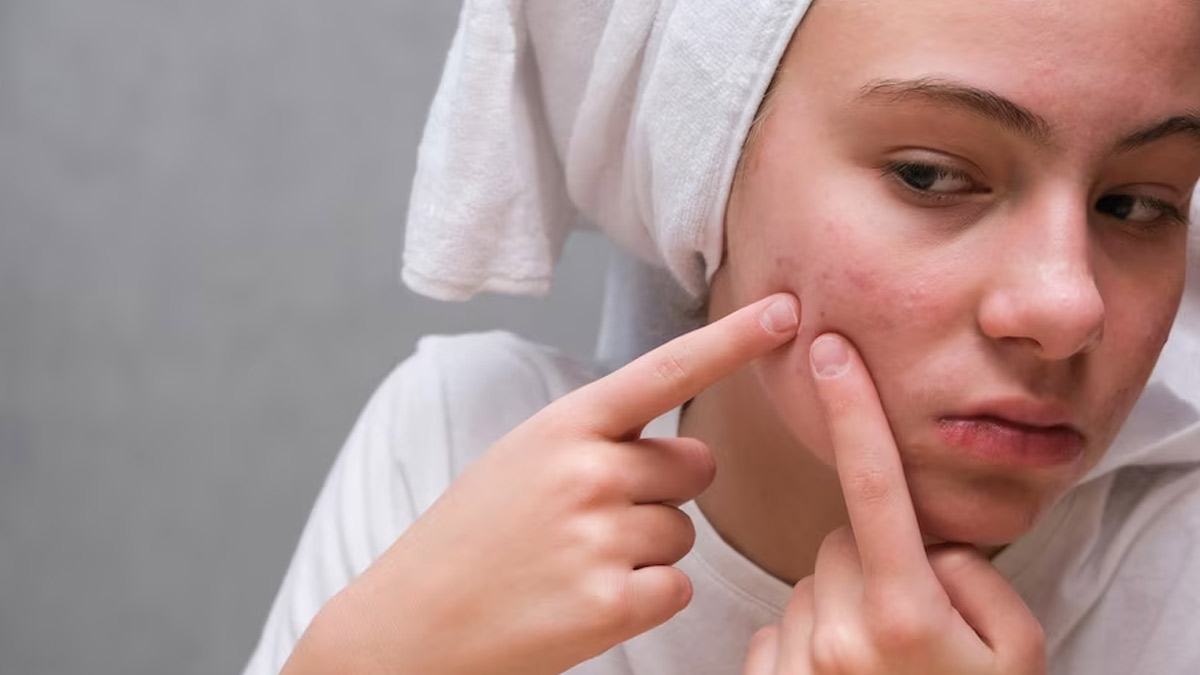
Are you worried about the infected pimple, accompanied by pain, redness, and swelling? It can be caused due to various factors, such as bacteria buildup and excess oil production. If you are someone who pops their pimple to get rid of it, you should stop doing it right away. With proper care and attention, you can effectively manage and treat infected pimples, restoring your skin's health and vitality. In this article, we list different ways to treat an infected pimple at home.
Table of Content:-

When bacteria, especially Propionibacterium acnes, get trapped inside a hair follicle or pore, it leads to inflammation, redness, and swelling, resulting in an infected pimple. In some cases, the pimple may turn into a whitehead or a pus-filled lesion, indicating an infection. It is crucial to treat infected pimples immediately to prevent the spread of bacteria and reduce the chances of scarring.
More than 80% of youngsters have acne vulgaris, which is the primary source of pimples. After 25, it impacts 12% of women and 3% of men, according to BMJ Clinical Evidence.
Tips To Treat Infected Pimple

Gentle Cleansing
One of the first things that you should practise to get rid of infected pimples is to gently cleanse the area with a mild and non-abrasive cleaner. Cleansing helps remove excess oil, dirt, and bacteria from the skin's surface, promoting healing and preventing further breakouts. Also, you should avoid harsh scrubbing or abrasive exfoliants, as these can further irritate the skin and exacerbate inflammation. Use lukewarm water to wash the face and pat dry with a clean towel.
Warm Compress
You can even apply a warm compress to the infected pimple to help reduce inflammation and alleviate associated pain. All you need to do is simply soak a clean washcloth in warm water, wring out excess moisture, and gently place it over the affected area for 5-10 minutes. You can repeat this process several times a day to promote drainage and expedite healing.
Also Read: Pimple Inside Nose: Know Its Causes, Symptoms, Home Treatment

Avoid Picking or Squeezing
This may seem to be a convenient way to get rid of pimples, however, you should refrain from doing so. This is because it can lead to inflammation, spreading of bacteria, and increase the risk of scarring. Picking at the pimple can also introduce additional bacteria and lead to secondary infections. Instead, allow the pimple to heal naturally and avoid touching the affected area with dirty hands. If the pimple does not improve or becomes increasingly painful, consult a dermatologist for further evaluation and treatment.
Maintain Good Hygiene
This practice not only helps to get rid of infected pimples but also helps in preventing them. Wash your face twice daily with a gentle cleanser, especially after sweating or engaging in physical activities. Make sure to avoid using harsh or abrasive skincare products that can strip the skin of its natural oils and disrupt the skin's barrier function. Also, regularly wash your hands to prevent transferring bacteria to your face and exacerbating existing pimples.
Also Read: From Clearing Acne to Exfoliation: Here's Why You Should Use Grapefruit For Your Skin

Use Non-Comedogenic Products
When choosing skincare and cosmetic products, you should opt for non-comedogenic formulas that are specifically designed not to clog pores or exacerbate acne. Look for products labelled 'non-comedogenic' or 'oil-free' to help minimise the risk of further breakouts. Avoid heavy, occlusive moisturisers and makeup products that can trap bacteria and exacerbate acne-prone skin.
Bottomline
An infected pimple requires prompt attention to prevent further irritation and potential scarring. If you have an infected pimple that does not improve or becomes increasingly painful, it is important to seek professional medical advice to determine the best course of treatment.
[Disclaimer: This article contains information for informational purposes only, hence, we advise you to consult your dermatologist if you are dealing with any skin issues to avoid complications.]
Also watch this video
How we keep this article up to date:
We work with experts and keep a close eye on the latest in health and wellness. Whenever there is a new research or helpful information, we update our articles with accurate and useful advice.
Current Version